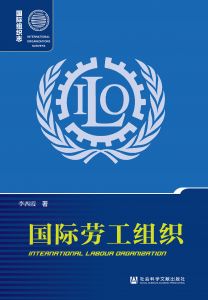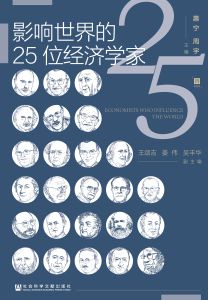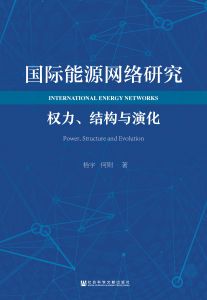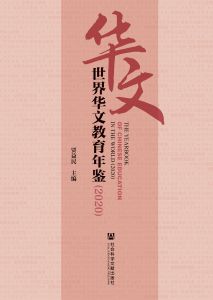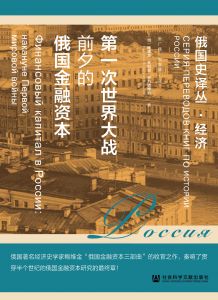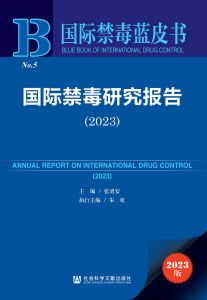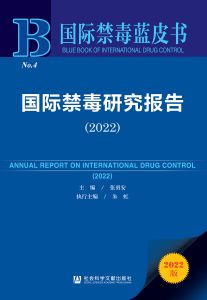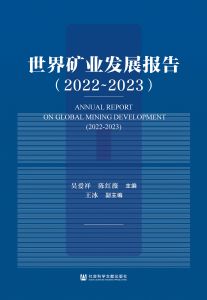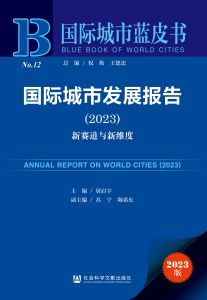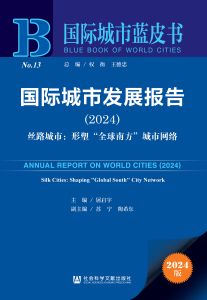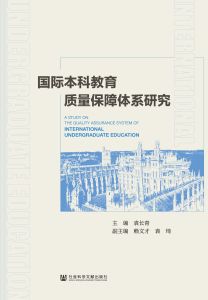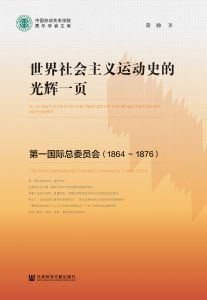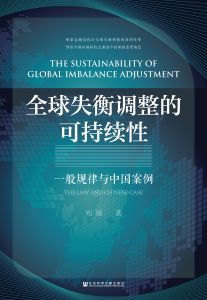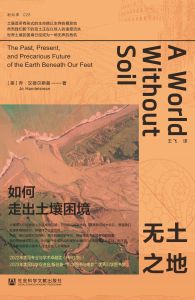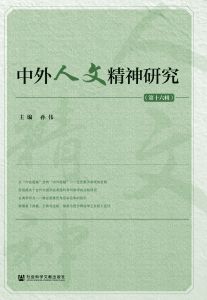首页 >
图书详情
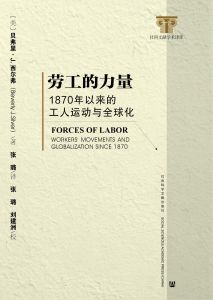
图书简介
目录
参考文献
音频
视频
本书依据国际劳工运动的一个重要的新数据库——世界劳工小组数据库,对劳工运动进行了历时长、范围广的研究,揭示了19世纪晚期以来地方的劳工运动与国际范围内的政治、经济、社会进程是相关的。通过对特定阶段的全球工业化进程进行审慎的、实证性的分析,作者认为,资本到哪里,劳工和资本的冲突也会跟到哪里,指出劳工运动深深地嵌入世界政治的动态体制当中,总结了劳工运动的重心在国家之间转移及其与生产的地理分布的关系。
[展开]
-
第一章 绪论
-
第一节 劳工运动与劳工研究的双重危机
-
第二节 关于劳工与劳工运动的现状与未来的辩论
-
第三节 世界-历史视角下的劳工抗争:概念与理论框架
-
第四节 研究策略
-
第五节 20世纪的世界工人:本书概要
-
-
第二章 劳工运动与资本转移
-
第一节 汽车产业中劳工抗争的世界-历史模式
-
第二节 从美国的弗林特到韩国的蔚山:汽车工人大罢工浪潮的历史再现
-
第三节 后福特主义的技术调整?
-
第四节 边界划分和“精益-二元”生产模式的悖论
-
-
第三章 劳工运动与产品周期
-
第一节 汽车产业的产品周期
-
第二节 比较视角中的纺织工业产品周期
-
第三节 产品周期、调整策略与运输产业中的劳工抗争
-
第四节 一种新的产品调整策略?
-
第五节 结论
-
-
第四章 劳工运动和世界政治
-
第一节 世界大战和劳工抗争
-
第二节 19世纪后期的全球化和现代劳工运动的兴起
-
第三节 国际和国内冲突的恶性循环
-
第四节 劳工抗争、世界大战和殖民地世界的国家独立
-
第五节 美国霸权、大众消费以及发展主义的社会契约
-
第六节 从美国的霸权危机到世界劳工的危机
-
-
第五章 世界-历史视角下当代劳工运动发展的动力机制
-
第一节 一场冲向底线的竞赛?
-
第二节 南北差距的终结?
-
第三节 工人结构性谈判力量的削弱?
-
第四节 战争与工人权利将何去何从?
-
第五节 新劳工国际主义?
-
-
附录一 世界劳工小组数据库:概念化、测量方法与数据收集程序
-
一 世界范围内劳工抗争的概念
-
二 对世界范围内劳工抗争的测量
-
三 数据收集的程序
-
四 对世界劳工小组数据库有效性的评估
-
-
附录二 从报纸索引中记录数据的说明
-
一 哪种类型的被报道的行为应该被记录
-
二 浏览报纸索引的范畴
-
三 如何运用数据记录表格
-
四 记录行动类型的指南
-
五 记录位置的指南
-
六 记录产业的指南
-
七 如何推断
-
-
附录三 国家的分类
[1][1]AAMA. 1995. World Motor Vehicle Data ,1996 Edition. Detroit:American Automobile Manufacturers Association.
[2][2]Abbott,Andrew,and Stanley DeViney. 1992. “The Welfare State as Transnational Event:Evidence from Sequences of Policy Adoption.” Social Science History ,16 (2),245-74.
[3][3]Abendroth,Wolfgang. 1972. A Short History of the European Working Class . New York:Monthly Review Press.
[4][4]Abo,Tetsuo,ed. 1994. Hybrid Factory:The Japanese Production System in the United States . London:Oxford University Press.
[5][5]Abrahamian,Ervand. 1982. Iran:Between Two Revolutions . Princeton,NJ:Princeton University Press.
[6][6]Adler,Glenn,and Eddie Webster. 2000. Trade Unions and Democratization in South Africa,1985-1997 . New York:St. Martin’s Press.
[7][7]Agence France-Presse. 2000. “International Unions at Odds on Need for Stricter Labour Standards,” Agence France-Presse ,April 6.
[8][8]Aglietta,Michel. 1979. A Theory of Capitalist Regulation:The U.S. Experience . London:New Left Books.
[9][9]Altshuler,Alan,et al.,1984. The Future of the Automobile:The Report of MIT’s International Automobile Program . Cambridge,MA:MIT Press.
[10][10]Apple,Nixon. 1980. “The Rise and Fall of Full Employment Capitalism,” Studies in Political Economy ,4,Autumn,5-39.
[11][11]Arrighi,Giovanni. 1990a. “Mandst-Century,American-Century:The Making and Remaking of the World Labor Movement,” New Left Review ,179,Jan-Feb,29-63.
[12][12]Arrighi,Giovanni. 1990b. “The Developmentalist Illusion:A Reconceptualization of the Semiperiphery.” In William G. Martin,ed.,Semiperipheral States in the World-Economy ,pp. 11-42. New York:Greenwood Press.
[13][13]Arrighi,Giovanni. 1994. The Long Twentieth Century:Money,Power and the Origins of Our Times . London:Verso.
[14][14]Arrighi,Giovanni. 1995. “Labor Unrest in Italy,1880-1990.” Review (Fernand Braudel Center),18(1),51-68.
[15][15]Arrighi,Giovanni and Beverly Silver. 1984. “Labor Movements and Capital Migration:The US and Western Europe in World-Historical Perspective.” In C. Bergquist ed.,Labor in the Capitalist World-Economy ,pp. 183-216. Beverly Hills,CA:Sage.
[16][16]Arrighi,Giovanni,Satoshi Iked a,and Alexander Irwan. 1993. “The Rise of East Asia:One Miracle or Many?” In Ravi A. Palat,ed.,Pacific-Asia and the Future of the World-System ,pp. 41-65. Westport,CT:Greenwood Press.
[17][17]Arrighi,Giovanni and Beverly J. Silver with I. Ahmad,K. Barr,S. Hisaeda,P. K. Hui,K. Ray,R. E. Reifer,M. Shih,and E. Slater. 1999. Chaos and Governance in the Modern World System . Minneapolis:University of Minnesota Press.
[18][18]Arrighi,Giovanni,Beverly J. Silver,and Benjamin D. Brewer. 2003. “Industrial Convergence and the Persistence of the North-South Divide.” Studies in Comparative International Development ,38 (1),3-31.
[19][19]Automotive News. 1996. “Automakers Stampede to Build Plants in Brazil,” Automotive News ,November 25,p. 9.
[20][20]Ball,Stephen J. 1993. “Education Markets,Choice and Social Class:The Market as a Class Strategy in the UK and USA.” British Journal of Sociology of Education ,14,(1),3-19.
[21][21]Batraclough,Geoffrey. 1967. An Introduction to Contemporary History . Har-mondsworth:Penguin.
[22][22]Barton,Ava. 1989. “Questions of Gender:Deskilling and Demasculinization in France,1830-1871.” Gender and History ,1,178-99.
[23][23]Bataille,Georges. 1988. The Accursed Share:An Essay on General Economy . New York:Zone Books.
[24][24]Beinin,Joel,and Zachary Lockman. 1987. Workers on the Nile:Nationalism,Communism,Islam,and the Egyptian Working Class,1882-1954 . Princeton,NJ:Princeton University Press.
[25][25]Beittel,Mark. 1989. “Labor Unrest in South Africa” (unpublished manuscript),SUNY,Binghamton,NY.
[26][26]Bell,Daniel. 1973. The Coming of Post-Industrial Society . New York:Basic Books.
[27][27]Benería,Lourdes. 1995. “Response:The Dynamics of Globalization.” International Labor and Working-Class History ,47,Spring,45-52.
[28][28]Berghahn,V. R. 1973. Germany and the Approach of War in 1914 . New York:St. Martin’s.
[29][29]Bergquist,Charles. 1986. Labor in Latin America:Comparative Essays on Chile,Argentina,Venezuela,and Colombia . Stanford,CA:Stanford University Press.
[30][30]Berlanstein,Lenard R. 1993. “Introduction.” In Lenard R. Berlanstein,ed.,Rethinking Labor History:Essays on Discourse and Class Analysis . Urbana:University of Illinois Press.
[31][31]Beynon,Huw. 1973. Working for Ford . Harmondsworth:Penguin.
[32][32]Biernacki,Richard. 1995. The Fabrication of Labor:Germany and Britain,1640-1914 . Berkeley:University of California Press.
[33][33]Blashill,J. 1972. “The Proper Role of US Corporations in South Africa,” Fortune ,July.
[34][34]Block,Fred L. 1977. The Origins of International Economic Disorder:A Study of the United States International Monetary Policy from World War II to the Present . Berkeley:University of California Press.
[35][35]Block,Fred L. 1990. Postindustrial Possibilities:A Critique of Economic Discourse . Berkeley:University of California Press.
[36][36]Block,Fred L. 1996. The Vampire State:And Other Myths and Fallacies about the U.S. Economy . New York:The New Press.
[37][37]Block,Fred L. 2001. “Introduction.” Karl Polanyi,The Great Transformation:The Political and Economic Origins of Our Times (second edition),pp. xviii-xxxviii. Boston:Beacon Press.
[38][38]Bloomfield,Gerald T. 1991. “The World Automobile Industry in Transition.” In C. M. Law,ed.,Restructuring the Global Automobile Industry ,pp. 19-60. London:Routledge.
[39][39]Bluestone,Barry,and Bennett Harrison. 1982. The Deindustrialization of America:Plant Closings,Community Abandonment,and the Dismantling of Basic Industry . New York:Basic.
[40][40]Bonacich,Edna,and Richard P. Appelbaum. 2000. Behind the Label:Inequality in the Los Angeles Apparel Industry . Berkeley,CA:University of California Press.
[41][41]Borden,William S. 1984. The Pacific Alliance:United States Foreign Economic Policy and Japanese Trade Recovery,1941-1955 . Madison:University of Wisconsin Press.
[42][42]Boyer,Robert. 1979. “Wage Formation in Historical Perspective:The French Experience.” Cambridge Journal of Economics 3 (2),99-118.
[43][43]Bradsher,Keith. 1997. “In South America,Auto Makers See One Big Showroom,” New York Times ,April 25,D1.
[44][44]Brecher,Jeremy. 1972. Strike! Boston:South End Press.
[45][45]Brecher,Jeremy. 1994/95. “Global Unemployment at Seven Hundred Million.” In Global Issues 94/95 ,pp. 32-35. Guilford,CT:Dushkin Publishing.
[46][46]Brennan,James P. 1994. Labor Wars in Cordoba,1955-1976. Ideology,Work and Politics in an Argentine Industrial City . Cambridge,MA:Harvard University Press.
[47][47]Bridges,Amy. 1986. “Becoming American:The Working Classes in the United States before the Civil War.” In I. Katznelson and A. R. Zolberg,eds.,Working-Class Formation ,pp. 157-96. Princeton,NJ:Princeton University Press.
[48][48]Brody,David. 1980. Workers in Industrial America . New York:Oxford University Press.
[49][49]Bronfenbrenner,Kate. 1996. The Effects of Plant Closing or Threat of Plant Closing on the Right of Workers to Organize . Final Report Submitted to the Labor Secretariat of the North American Commission for Labor Cooperation,September 30.
[50][50]Bronfenbrenner,Kate,Sheldon Friedman,Richard W. Hurd,Rudolph A. Oswald,and Ronald L. Seeber,eds. 1998. Organizing to Win:New Research on Union Strategies . Ithaca,NY:Cornell University Press.
[51][51]Brooke,James. 1994. “Inland Region of Brazil Grows Like Few Others.” New York Times ,August 11.
[52][52]Brown,Carolyn A. 1988. “The Dialectics of Colonial Labour Control:Class Struggles in the Nigerian Coal Industry,1914-1949.” Journal of Asian and African Studies 23 (1-2),32-59.
[53][53]Burawoy,Michael. 1982. “The Hidden Abode of Underdevelopment:Labor Process and the State in Zambia.” Politics and Society 11 (4),123-66.
[54][54]Burawoy,Michael. 1983. “Factory Regimes Under Advanced Capitalism.” American Sociological Review ,48 (5),October,587-605.
[55][55]Burawoy,Michael. 1985. The Politics of Production:Factory Regimes Under Capitalism and Socialism . London:Verso.
[56][56]Burbach,Roger,and William I. Robinson. 1999. “The Fin de Siècle Debate:Globalization as Global Shift.” Science and Society ,63 (1),10-39.
[57][57]Burley,Anne-Marie. 1993. “Regulating the World:Multilateralism,International Law,and the Projection of the New Deal Regulatory State.” In J. G. Ruggie,ed.,Multilateralism Matters:The Theory and Praxis of an Institutional Form ,pp. 125-56. New York:Columbia University Press.
[58][58]Burstein,Paul. 1985. Discrimination,Jobs and Politics . Chicago:University of Chicago Press.
[59][59]Camuffo,Arnaldo,and Giuseppe Volpato. 1997. “Italy:Changing the Workplace in the Automobile Industry.” In Thomas A. Kochan et al.,eds.,After Lean Production . Ithaca,NY:Cornell University Press,155-76.
[60][60]Cargo Info. 1997. “Motor industry turnaround impacts on Durban port,” Cargo Info:Freight and Trading Weekly (South Africa),January 31 [http://cargoinfo. co.za/ftw/97/97ja31j.html].
[61][61]Carr,Edward H. 1945. Nationalism and After . London:Macmillan.
[62][62]Castells,Manuel. 1997. The Information Age,vol. 2:The Power of Identity . Oxford:Blackwell.
[63][63]Castells,Manuel and Yukio Aoyama. 1994. “Paths Toward the Informational Society:Employment Structure in G-7 Countries,1920-1990.” International Labour Review ,133 (1),5-33.
[64][64]Chalmers,Norma J. 1989. Industrial Relations in Japan:The Peripheral Workforce . London:Routledge.
[65][65]Chandavarkar,Rajnarayan. 1994. The Origins of Industrial Capitalism in India:Business Strategies and the Working Classes in Bombay,1900-1940 . Cambridge:Cambridge University Press.
[66][66]Chandler,Alfred D.,Jr. 1977. The Visible Hand:The Managerial Revolution in American Business . Cambridge,MA:Harvard University Press.
[67][67]Chapman,Sidney J. 1904. The Lancashire Cotton Industry:A Study in Economic Development . Manchester:Manchester University Press.
[68][68]Chase-Dunn,Christopher. 1989. Global Formation:Structures of the World-Economy . Cambridge,MA:Basil Blackwell.
[69][69]Chatterjee,Partha. 1986. Nationalist Thought and the Colonial World:A Derivative Discourse? London:Zed Press.
[70][70]Chesneaux,Jean. 1968. The Chinese Labor Movement,1919-1927 . Stanford,CA:Stanford University Press.
[71][71]China Automotive Technology and Research Center. 1998. Automotive Industry of China . Tianjin:Nankai University Press.
[72][72]Chossudovsky,Michel. 1997. The Globalisation of Poverty:Impacts of IMF and World Bank Reforms . Penang:Third World Network.
[73][73]Ciccantell,Paul S.,and Stephen G. Bunker,eds. 1998. Space and Transport in the World-System . Westport,CT:Greenwood Press.
[74][74]Claude,Jr.,Inis. 1956. Swords into Plowshares:The Problems and Progress of International Organization (second edition). New York:Random House.
[75][75]Cockburn,Alexander. 2000. “Short History of the Twentieth Century,” The Nation ,January 3,p. 9.
[76][76]Cockburn,Cynthia. 1983. Brothers:Male Dominance and Technological Change . London:Pluto.
[77][77]Cohen,Isaac. 1990. American Management and British Labor:A Comparative Study of the Cotton Spinning Industry . New York:Greenwood Press.
[78][78]Cohen,Robin. 1980. “Resistance and Hidden Forms of Consciousness Amongst African Workers.” Review of African Political Economy ,19,September-December,8-22.
[79][79]Cole,Stephen. 1969. The Unionization of Teachers:A Case Study of the UFT . New York:Praeger.
[80][80]Collier,Ruth Berins. 1999. Paths Toward Democracy:The Working Class and Elites in Western Europe and South America . Cambridge:Cambridge University Press.
[81][81]Collier,Ruth Berins and David Collier. 1991. Shaping the Political Arena:Critical Junctures,the Labor Movement,and Regime Dynamics in Latin America . Princeton,NJ:Princeton University Press.
[82][82]Cooper,Frederick. 1996. Decolonization and African Society:The Labor Question in French and British Africa . Cambridge:Cambridge University Press.
[83][83]Cooper,Frederick. 2000. “Farewell to the Category-Producing Class?” International Labor and Working-Class History ,57,Spring,60-68.
[84][84]Cowie,Jefferson. 1999. Capital Moves:RCA’s Seventy-Year Search for Cheap Labor . Ithaca,NY:Cornell University Press.
[85][85]Cronin,James E. 1983. “Labor Insurgency and Class Formation:Comparative Perspectives on the Crisis of 1917-1920 in Europe.” In C. Siriani and J. Cronin,eds.,Work,Community,and Power:The Experience of Labor in Europe and America,1900-1925 ,pp. 20-48. Philadelphia:Temple University Press.
[86][86]Cronin,James E. 1996. The World the Cold War Made . New York:Routledge.
[87][87]Crouch,Colin,and Alessandro Pizzorno,eds. 1978. The Resurgence of Class Conflict in Western Europe Since 1968 (2 volumes). New York:Holmes & Meier.
[88][88]Cuban,Larry. 1984. How Teachers Taught:Constancy and Change in American Classrooms,1890-1990 . New York:Longman.
[89][89]Cusumano,Michael A. 1985. The Japanese Automobile Industry:Technology and Management at Nissan and Toyota . Cambridge,MA;Harvard University Press.
[90][90]Dangler,Jamie Faricellia. 1995. “The Times (London)and the New York Times as Sources on World Labor Unrest.” Review (Fernand Braudel Center),18,1,35-47.
[91][91]Danto,Arthur C. 1965. Analytical Philosophy of History . Cambridge:Cambridge University Press.
[92][92]Danylewycz,Marta,and Alison Prentice. 1988. “Teachers’ Work:Changing Patterns and Perspections in the Emerging School Systems of Nineteenth-and Early Twentieth-Century Central Canada.” In Jenny Ozga,ed.,Schoolwork:Interpreting the Labour Process of Teaching ,pp. 61-80. Philadelphia:Open University Press.
[93][93]Danzger,Herbert M. 1975. “Validating Conflict Data.” American Sociological Review ,XL (5),570-84.
[94][94]Dassbach,Carl. 1988. Global Enterprises and the World Economy:Ford,General Motors and IBM,The Emergence of the Transnational Enterprise . PhD Dissertation,SUNY-Binghamton.
[95][95]Davis,Mike. 1986. Prisoners of the American Dream . London:Verso.
[96][96]Deyo,Frederic C. 1989. Beneath the Miracle:Labor Subordination in the New Asian Industrialism . Berkeley:University of California Press.
[97][97]Deyo,Frederic C. 1996a. “Introduction:Social Reconstructions of the World Automobile Industry.” In F. C. Deyo,ed.,Social Reconstructions of the World Automobile Industry ,pp. 1-17. New York:St. Martin’s Press.
[98][98]Deyo,Frederic C. 1996b. “Competition,Flexibility and Industrial Ascent:The Thai Auto Industry.” In F. C. Deyo,ed. Social Reconstructions of the World Automobile Industry ,pp. 136-56. New York:St. Martin’s Press.
[99][99]Dicken,Peter. 1998. Global Shift:Transformation the World Economy . New York:Guilford Press.
[100][100]Dickerson,Kitty,G. 1991. Textiles and Apparel in the International Economy . New York:Macmillan.
[101][101]DIEESE. 1995. Rumos do ABC:A Economia do Grande ABC na Visa~o dos Metalurgicos . Sao Bernardo do Campo:DIEESE (subsection of Sindicato dos Metalurgicos).
[102][102]Drucker,Peter. 1993. Post-Capitalist Society . New York:Harper.
[103][103]Dubofsky,Melvyn. 1983. “Abortive Reform:The Wilson Administration and Organized Labor”. In C. Siriani and J. Cronin,eds.,Work,Community and Power:The Emergence of Labor in Europe and America,1900-1925 ,pp. 197-220. hiladelphia:Temple University Press.
[104][104]Dubofsky,Melvyn and W. Van Tine. 1977. John L. Lewis:A Biography . Chicago:Quadrangle.
[105][105]Dubois,Pierre. 1978. “New Forms of Industrial Conflict 1960-1974.” In C. Crouch and A. Pizzorno,eds. The Resurgence of Class Conflict in Western Europe Since 1968,Vol. 2 ,pp. 1-34. New York:Holmes & Meier.
[106][106]Dugger,Celia W. 1999. “Poor Nations United to Fight Clinton’s Labor-Trade Linkage”,International Herald Tribune ,December 18,p. 9.
[107][107]Eckholm,Erik. 2001. “Chinese Warn of Civil Unrest Across Country:Communist Party Document Paints Picture of Discontent,” International Herald Tribune ,June 2-3,pp. 1,4.
[108][108]Economist,The. 1992. “World Economic Survey,” The Economist ,September 19.
[109][109]Economist Intelligence Unit. 1990. Country Profile:Brazil ,# 1.
[110][110]Edwards,P. K. 1981. Strikes in the United States,1881-1974 . New York:St. Martin’s Press.
[111][111]Edwards,Richard. 1979. Contested Terrain:The Transformation of the Workplace in the Twentieth Century . New York:Basic Books.
[112][112]Elson,Diane,and Ruth Pearson. 1981. “Nimble Fingers Make Cheap Workers:An Analysis of Women’s Employment in Third World Manufacturing.” Feminist Review ,7,87-107.
[113][113]Escobar,Arturo. 1995. Encountering Development:States and Industrial Transformation . Princeton,NJ:Princeton University Press.
[114][114]Esteva,Gustavo. 1992. “Development.” In Wolfgang Sachs,ed.,The Development Dictionary ,pp. 6-25. London:Zed Books.
[115][115]Evans,Peter. 1995. Embedded Autonomy:States and Industrial Transformation . Princeton,NJ:Princeton University Press.
[116][116]Fantasia,Rick. 1988. Cultures of Solidarity:Consciousness,Action and Contemporary American Workers . Berkeley;CA:University of California Press.
[117][117]Farley,Miriam S. 1950. Aspects of Japan’s Labor Problem . New York:The John Day Company.
[118][118]Feldman,Gerald. 1966. Army,Industry and Labor in Germany,1914-1918 . Princeton,NJ:Princeton University Press.
[119][119]Fernandez-Kelly,Maria Patricia. 1983. For We Are Soldf,I and My People:Women and Industry in Mexico’s Frontier . Albany,NY:SUNY Press.
[120][120]Filkins,Dexter. 2000. “Punching in the Future:Technology Puts India to Work from Afar,” International Herald Tribune ,April 8-9,pp. 1,8.
[121][121]Fischer,F. 1975. Germany’s Aims in the First World War . New York:W. W. Norton.
[122][122]Fishman,Robert M. 1990. Working-Class Organization and the Return of Democracy in Spain . Ithaca:Cornell University Press.
[123][123]Florida,Richard,and Martin Kenney. 1991. “Transplanted Organizations:The Transfer of Japanese Industrial Organization in the U.S.” American Sociological Review ,56,381-98.
[124][124]Foweraker,Joe. 1989. Making Democracy in Spain . Cambridge:Cambridge University Press.
[125][125]Franzosi,Roberto. 1987. “The Press as a Source of Socio-Historical Data”,Historical Methods ,20,1,Winter,5-16.
[126][126]Franzosi,Roberto. 1990. “Strategies for the Prevention,Detection,and Correction of Measurement Error in Data Collected from Textual Sources.” Sociological Methods and Research ,28 (4),May,442-72.
[127][127]Franzosi,Roberto. 1995. The Puzzle of Strikes:Class and State Strategies in Postwar Italy . Cambridge:Cambridge University Press.
[128][128]Frieden,Jeffry. 1987. Banking on the World . New York:Harper and Row.
[129][129]Fröbel,Folker,Jürgen Heinrich,and Otto Kreye. 1980. The New International Division of Labour:Structural Employment and Industrialization in Developing Countries . Cambridge:Cambridge University Press.
[130][130]Gereffi,Gary. 1994. “The Organization of Buyer-Driven Global Commodity Chains.” In Gary Gereffi and Miguel Korzeniewicz,eds.,Commodity Chains and Global Capitalism ,pp. 95-122. Westport,CT:Praeger.
[131][131]Giddens,Anthony. 1987. The Nation-State and Violence . Berkeley:University of California Press.
[132][132]Giddy,Ian. 1978. “The Demise of the Product Cycle in International Business Theory.” Columbia Journal of World Business ,Spring,90-97.
[133][133]Gill,Stephen,and James H. Mittleman,eds.,1997. Innovation and Transformation in International Studies . Cambridge:Cambridge University Press.
[134][134]Gills,Barry,and Andre G. Frank. 1992. “World System Cycles,Crises,and Hegemonic Shifts,1700 BC to 1700 AD.” Review (Fernand Braudel Center),15 (4),621-87.
[135][135]Godfrey,Walter. 1986. Global Unemployment:The New Challenge to Economic Theory . Sussex:Harvester Press.
[136][136]Goldfield,Michael. 1987. The Decline of Organized Labor in the United States . Chicago:University of Chicago Press.
[137][137]Goldstone,Jack A. 1991. Revolution and Rebellion in the Early Modern World . Berkeley:University of California Press.
[138][138]Gordon,David M. 1996. Fat and Mean:The Corporate Squeeze of Working Americans and the Myth of Managerial “Downsizing.” New York:Martin Kessler Books.
[139][139]Gordon,David M,Richard Edwards,and Michael Reich. 1982. Segmented Work,Divided Workers:The Historical Transformation of Labor in the United States . Cambridge:Cambridge University Press.
[140][140]Greenhouse,Stephen. 2000. “Low-Paid Jobs Lead Advance in Employment,” New York Times ,October 1.
[141][141]Greider,William. 1998. Fortress America:The American Military and the Consequences of Peace . New York:Public Affairs.
[142][142]Greider,William. 1999. “The Battle Beyond Seattle,” The Nation ,December 27,pp. 5-6.
[143][143]Greider,William. 2001. “It’s Time to Ask ‘Borderless’ Corporations:Which Side Are You On?” The Nation ,October 26.
[144][144]Griffin,Larry. 1992. “Temporality,Events,and Explanation in Historical Sociology:An Introduction.” Sociological Methods and Research ,20 (4),May,403-27.
[145][145]Griffin,Larry J.,Holly J. McCammon,and Christopher Botsko. 1990. “The ‘Unmaking’ of a Movement?The Crisis of US Trade Unions in Comparative Perspective.” In Maureen Hallinan,David IClein,and Jennifer Glass,eds.,Change in Societal Institutions ,pp. 169-94. New York:Plenum Press.
[146][146]Grosfoguel,Ramón. 1996. “From Cepalismo to Neoliberalism:A World-System Approach to Conceptual Shifts in Latin America.” Review (Fernand Braudel Center)19(2),131-54.
[147][147]Gwynne,Robert. 1991. “New Horizons?The Third World Motor Vehicle Industry in an International Framework.” In C. M. Law,ed.,Restructuring the Global Automobile Industry ,pp. 61-87. London:Routledge.
[148][148]Hammel,E. A. 1980. “The Comparative Method in Anthropological Perspective.” Comparative Studies in Society and History ,22 (2),April,145-55.
[149][149]Harazti,Miklos. 1977. Workers in a Workers’ State . Harmondsworth:Penguin.
[150][150]Hardt,Michael,and Antonio Negri. 2000. Empire . Cambridge,MA:Harvard University Press.
[151][151]Harris,Nigel. 1987. The End of the Third World. Newly Industrializing Countries and the Decline of an Ideology . Harmondsworth,Middlesex:Penguin Books.
[152][152]Harrison,Bennett. 1997. Lean and Mean:Why Large Corporations Will Continue to Dominate the Global Economy . New York:Guilford Press.
[153][153]Hartwell,R. M. 1973. “The Service Revolution:The Growth of Services in Modern Economy.” In C. M. Cipolla,ed.,The Fontana Economic History of Europe:The Industrial Revolution ,pp. 359-96. London:Collins Clear-Type Press.
[154][154]Harvey,David. 1989. The Condition of Postmodernity:An Enquiry into the Origins of Cultural Change . Oxford:Basil Blackwell.
[155][155]Harvey,David. 1999. “Globalization in Question.” Rethinking Marxism ,8 (4),Winter,1-17.
[156][156]Harvey,David. 2000. Spaces of Hope . Edinburgh:Edinburgh University Press.
[157][157]Harwit,Eric. 1995. China’s Automobile Industry:Policies,Problems and Prospects . Armonk,NY:M. E. Sharpe.
[158][158]Haupt,Georges. 1972. Socialism and the Great War:The Collapse of the Second International . Oxford:Clarendon Press.
[159][159]Held,David,Anthony McGrew,David Goldblatt,and Jonathan Perraton. 1999. Global Transformations. Politics,Economics and Culture . Stanford,CA:Stanford University Press.
[160][160]Hexter,J. H. 1979. On Historians . Cambridge,MA;Harvard University Press.
[161][161]Hibbs,Douglas A.,Jr. 1978. “On the Political Economy of Long-Run Trends in Strike Activity.” British Journal of Political Science ,8:(2),April,153-75.
[162][162]Hirschman,Albert O. 1970. Exit,Voice,Loyalty:Responses to Decline in Firms,Organizations and States . Cambridge,MA:Harvard University Press.
[163][163]Hirschman,Albert O. 1979. Essays in Trespassing:Economics to Politics and Beyond . Cambridge:Cambridge University Press.
[164][164]Hirschman,Albert O. 1989. “How the Keynesian Revolution was Exported from the United States,and other Comments.” In Peter A. Hall,ed.,The Political Power of Economic Ideas:Keynesianism Across Nations ,pp. 347-59. Princeton,NJ:Princeton University Press.
[165][165]Hirschsohn,Philip. 1997. “South Africa:The Struggle for Human Resource Development.” In Thomas A. Kochan et al.,eds.,After Lean Production ,pp. 231-54. Ithaca,NY:Cornell University Press.
[166][166]Hobsbawm,Eric. 1987. The Age of Empire,1875-1914 . New York:Pantheon Books.
[167][167]Hobsbawm,Eric. 1994. The Age of Extremes:A History of the World,1914-1991 . New York:Vintage.
[168][168]Honig,Emily. 1986. Sisters and Strangers:Women in the Shanghai Cotton Mills,1919-1949 . Stanford,CA:Stanford University Press.
[169][169]Hoogvelt,Ankie. 1997. Globalization and the Postcolonial World:The New Political Economy of Development . Baltimore,MD:Johns Hopkins University Press.
[170][170]Hopkins,Terence K. 1982a. “World-Systems Analysis:Methodological Issues”. In Terence K. Hopkins,Immanuel Wallerstein and Associates. World Systems Analysis:Theory and Methodology ,pp. 145-58. Beverly Hills,CA:Sage.
[171][171]Hopkins,Terence K. 1982b. “The Study of the Capitalist World-Economy.” In T. K. Hopkins,I. Wallerstein and Associates,World-Systems Analysis:Theory and Methodology ,pp. 9-38. Beverly Hills:Sage.
[172][172]Humphrey,John. 1982. Capitalist Control and Workers’ Struggle in the Brazilian Auto Industry ,Princeton,NJ:Princeton University Press.
[173][173]Humphrey,John. 1987. “Economic Crisis and Stability of Employment in the Brazilian Motor Industry.” In W. Brierley,ed.,Trade Unions and the Economic Crisis of the 1980’s ,pp. 119-31. Gower:Aldershot.
[174][174]Humphrey,John. 1993. “Japanese Production Management and Labour Relations in Brazil.” The Journal of Development Studies ,30 (1),October,92-114.
[175][175]Huntington,Samuel P. 1968. Political Order in Changing Societies . New Haven,CT:Yale University Press.
[176][176]Hyman,Richard. 1972. Strikes . London:Fontana/Collins.
[177][177]Hyman,Richard. 1992. “Trade Unions and the Disaggregation of the Working Class.” In M. Regini,ed.,The Future of Labour Movements ,pp. 150-68. Newbury Park,CA:Sage.
[178][178]Ikenberry,John G. 1989. “Rethinking the Origins of American Hegemony.” Political Science Quarterly ,104 (3),375-400.
[179][179]Imig,Doug,and Sidney Tarrow. 2000. “Political Contention in a Europeanising Polity”,West European Politics ,23 (4),73-93.
[180][180]Ingham,Geoffrey. 1994. “States and Markets in the Production of World Money:Sterling and the Dollar.” In S. Corbridge,R. Martin,and N. Thrift,eds.,Money,Power,and Space ,29-48. Oxford:Blackwell.
[181][181]Irons,Janet. 2000. Testing the New Deal:The General Textile Strike of 1934 in the American South . Urbana:University of Illinois Press.
[182][182]Ishida,Mitsuo 1997. “Japan:Beyond the Model for Lean Production.” In T. A. Kochan,R. D. Lansbury and J. P. MacDuffie,eds.,Beyond Lean Production ,pp. 45-60. Ithaca:Cornell University Press.
[183][183]Jackson,Michael. 1987. Strikes . New York:St. Martin’s Press.
[184][184]James,Daniel. 1981. “Rationalisation and Working Class Response:The Context and Limits of Factory Floor Activity in Argentina.” Journal of Latin American Studies ,13 (2),375-402.
[185][185]Jelin,Elisabeth. 1979. “Labour Conflicts under the Second Peronist Regime,Argentina,1973-76.” Development and Change ,10 (2),233-57.
[186][186]Jenkins,J. Craig,and Kevin Leicht. 1997. “Class Analysis and Social Movements:A Critique and Reformulation.” In John R. Hall,ed.,Reworking Class ,pp. 369-97. Ithaca:Cornell University Press.
[187][187]Jenkins,J. Craig and Charles Perrow. 1977. “Insurgency of the Powerless:Farm Workers Movements.” American Sociological Review ,XLII (2),249-67.
[188][188]Johnson,Richard. 1997. “GM and Korea Dance a Two-Step in World’s Automotive Ballroom,” Automotive News ,June 9,p. 14.
[189][189]Kaiser,D. E. 1983. “Germany and the Origins of the First World War.” Journal of Modern History 55:442-74.
[190][190]Kalb,Don,2000. “Class (in Place) Without Capitalism (in Space)?” International Labor and Working-Class History ,57,Spring,31-9.
[191][191]Kane,N. F. 1988. Textiles in Transition:Technology,Wages and Industry Relocation in the U.S. Textile Industry,1880-1930 . New York:Greenwood Press.
[192][192]Kapstein,Ethan B. 1996. “Workers and the World Economy.” Foreign Affairs ,7 5 (3),May/June,16-37.
[193][193]Kapstein,Ethan B. 1999. Sharing the Wealth:Workers and the World Economy . New York:W. W. Norton.
[194][194]Katznelson,Ira,and Aristide Zolberg. 1986,Working-Class Formation:Nineteenth-Century Patterns in Western Europe and the United States . Princeton,NJ:Princeton University Press.
[195][195]Keck,Margaret. 1989. “The New Unionism in the Brazilian Transition.” In Alfred Stepan,ed.,DemocratizingBrazil:Problems of Transition and Consolidation ,Chapter 8,pp. 252-96. New York:Oxford University Press.
[196][196]Keck,Margaret E. and Kathryn Sikkink. 1998. Activists Beyond Borders:Advocacy Networks in International Politics . Ithaca,NY:Cornell University Press.
[197][197]Kendall,W. 1975. The Labour Movement in Europe . London:Allen Lane.
[198][198]Kerr,Clark,and Abraham Siegel. 1964. “The Interindustry Propensity to Strike-An International Comparison.” In Clark Kerr,Labor and Management in Industrial Society ,pp. 105-47. Garden City,NY:Anchor Books.
[199][199]Keynes,John Maynard. [1920] 1971. The Economic Consequences of the Peace . New York:Harper & Row.
[200][200]Khor,Martin. 1999. “Take Care,the WTO Majority Is Tired of Being Manipulated,” International Herald Tribune ,December 21,p. 4.
[201][201]Kirk,Donald. 1994. Korean Dynasty:Hyundai and Chung Ju Yung . New York:M. E. Sharpe.
[202][202]Knowles,K. G. J. C. 1952. Strikes:A Study of Industrial Conflict . Oxford:Basil Blackwell.
[203][203]Kochan,Thomas A.,Russell D. Lansbury,and John Paul MacDuffie. 1997. After Lean Production:Evolving Employment Practices in the World Auto Industry . Ithaca,NY:Cornell University Press.
[204][204]Kocka,Jurgen. 1986. “Problems of Working-Class Formation in Germany:The Early Years,1800-1875.” In Ira Katznelson and Aristide R. Zolberg,eds.,Working-Class Formation ,pp. 279-351. Princeton,NJ:Princeton University Press.
[205][205]Koo,Hagen. 1993. “The State,Minjung ,and the Working Class in South Korea.” In H. Koo,ed.,State and Society in Contemporary Korea ,pp. 131-62. Ithaca,NY:Cornell University Press.
[206][206]Koo,Hagen. 2001. Korean Workers:The Culture and Politics of Class Formation . Ithaca:Cornell University Press.
[207][207]Koopmans,Ruud. 1993. “The Dynamics of Protest Waves:West Germany,1965 to 1989” American Sociological Review ,LVIII (5),October,637-58.
[208][208]Korpi,Walter,and Michael Shalev. 1979. “Strikes,Industrial Relations,and Class Conflict in Capitalist Societies.” British Journal of Sociology ,30 (2),June,164-87.
[209][209]Korzeniewicz,Roberto P. 1989. “Labor Unrest in Argentina,1887-1907.” Latin American Research Review ,24 (3),71-98.
[210][210]Korzeniewicz,Roberto P.,and Timothy P. Moran. 1997. “World Economic Trends in the Distribution of Income,1965-1992.” American Journal of Sociology ,102 (4),1000-39.
[211][211]Kowalewski,David. 1993. “Ballots and Bullets:Election Riots in the Periphery,1874-1985.” Journal of Development Studies ,24 (3),April,518-40.
[212][212]Krishnan,R. 1996. “December 1995:The First Revolt Against Globalization,” Monthly Review ,48 (1),May,1-22.
[213][213]Kutalik,Chris. 2002. “September 11:One Year Later,U.S. Workers Still Feel Fallout,” Labor Notes (Detroit),#282,September,pp. 1,14.
[214][214]Kutscher,R. E.,and J. A. Mark. 1983. “The Service Producing Sector:Some Common Perceptions Reviewed,” Monthly Labor Review ,April,pp. 21-24.
[215][215]Labor Notes. 2001. “AFL-CIO Pulls Out of Mobilization for Global Justice.” Labor Notes ,271,October,p. 3.
[216][216]LaFeber,Walter,1963. The New Empire:An Interpretation of American Expansion,1860-1898 . Ithaca,NY:Cornell University Press.
[217][217]Landes,David. 1969. The Unbound Prometheus . Cambridge:Cambridge University Press.
[218][218]Laqueur,Waiter. 1968. “Revolution.” International Encyclopedia of the Social Sciences ,XIII,501-7.
[219][219]Laux,James M. 1992. The European Automobile Industry . New York:Twayne Publishers.
[220][220]Lawn,Martin. 1987. “What Is the Teacher’s Job.” In Martin Lawn and Gerald Grace,eds.,Teachers:The Culture and Politics of Work ,pp. 50-64. New York:The Falmer Press.
[221][221]Lawn,Martin and Jenny Ozga. 1988. “The Educational Worker?A Reassessment of Teachers.” In Jenny Ozga,ed.,Schoolwork:Interpreting the Labour Process of Teaching ,pp. 81-98. Philadelphia:Open University Press.
[222][222]Lazonick,William. 1990. Competitive Advantage on the Shop Floor . Cambridge,MA:Harvard University Press.
[223][223]Lebow,R. N. 1981. Between Peace and War . Baltimore:Johns Hopkins University Press.
[224][224]Legters,Nettie. 1993. “Teachers as Workers in the World System.” Paper presented at the Social Science History Association Annual Meeting,Baltimore,November 4-7.
[225][225]Lenin,Vladimir. [1916] 1971. “Imperialism,the Highest Stage of Capitalism.” In V. I. Lenin Selected Works ,pp. 169-263. New York:International Publishers.
[226][226]Levi,Margaret,and David Olson. 2000. “The Battles of Seattle.” Politics and Society ,28 (3),September,309-29.
[227][227]Levine,S. B. 1958. Industrial Relations in Postwar Japan . Urbana:University of Illinois Press.
[228][228]Levy,Jack. 1989. “The Diversionary Theory of War:A Critique.” In M. I. Midlarsky,ed.,Handbook of War Studies ,pp. 258-88. London:Allen and Unwin.
[229][229]Levy,Jack. 1998. “The Causes of War and the Conditions of Peace.” Annual Review of Political Science ,1,139-65.
[230][230]Lewis,Jon,and Estelle Randall. 1986. “The State of the Unions.” Review of African Political Economy ,35,May,68-77.
[231][231]Lim,Linda Y. C. 1990. “Women’s Work in Export Factories:The Politics of a Cause.” In Irene Tinker,ed.,Persistent Inequalities:Women and Development ,pp. 101-19. New York:Oxford University Press.
[232][232]Litvak,Lawrence,Robert De Grasse,and Kathleen McTigue. 1978. South Africa:Foreign Investment and Apartheid . Washington,DC:Institute for Policy Studies.
[233][233]Lohr,Steve. 2002. “I. B. M. Opening a $2.5 Billion Specialized Chip Plant,” New York Times ,August 1,C1.
[234][234]Loth,Wilfried. 1988. The Division of the World,1941-1955 . London:Routledge.
[235][235]MacEwan,Arthur,and William K. Tabb. eds. 1989. Instability and Change in the World Economy . New York:Monthly Review Press.
[236][236]Machado,Kit G. 1992. “ASEAN State Industrial Policies and Japanese Regional Production Strategies:The Case of Malaysia’s Motor Vehicle Industry.” In C. Clark and S. Chan,eds.,The Evolving Pacific Basin in the Global Political Economy ,pp. 169-202. Boulder,CO:Lynne Rienner Publishers.
[237][237]Maier,Charles. 1978. “The Politics of Productivity:Foundations of American Economic Policy after World War II.” In P. Katzenstein,ed.,Between Power and Plenty:Foreign Economic Policies of Advanced Industrial States ,pp. 23-49. Madison:University of Wisconsin Press.
[238][238]Maier,Charles. 1981. “The Two Postwar Eras and the Conditions for Stability in Twentieth Century Europe.” American History Review ,86,327-52.
[239][239]Maier,Charles. 1987. In Search of Stability:Explorations in Historical Political Economy . Cambridge:Cambridge University Press.
[240][240]Mamdani,Mahmood. 1996. Citizen and Subject:Contemporary Africa and the Legacy of Late Colonialism . Princeton,NJ:Princeton University Press.
[241][241]Mann,Michael. 1988. States,War and Capitalism . Oxford:Blackwell.
[242][242]Mann,Michael. 1993. The Sources of Social Power,Vol. 2,The Rise of Classes and Nation-States,1760-1914 . Cambridge:Cambridge University Press.
[243][243]Maree,Johann. 1985. “The Emergence,Struggles and Achievements of Black Trade Unions in South Africa from 1973 to 1984.” Labour,Capital and Society 18 (2),November 278-303.
[244][244]Markoff,John. 1996. Waves of Democracy:Social Movements and Political Change . Thousand Oaks,CA:Pine Forge Press.
[245][245]Marshall,Neill,and Peter Wood. 1995. Services and Space:Key Aspects of Urban and Regional Development . New York:John Wiley & Sons.
[246][246]Martin,Benjamin,1990. The Agony of Modernization:Labor and Industrialization in Spain . Ithaca,NY:Cornell University Press.
[247][247]Marx,Karl. 1959. Capital,Vol. 1 . Moscow:Foreign Languages Publishing House.
[248][248]Marx,Karl and Friedrich Engels. 1967. The Communist Manifesto . Harmondsworth:Penguin.
[249][249]Mayer,Arno J. 1967. “Domestic Causes and Purposes of War in Europe,1870-1956.” In L. Krieger and F. Stern,eds.,The Responsibility of Power ,pp. 286-300. New York:Doubleday.
[250][250]Mayer,Arno J. 1977. “Internal Crisis and War Since 1870.” In C. L. Bertrand,ed.,Revolutionary Situations in Europe,1917-1922 ,pp. 201-33. Montreal:Inter-university Centre for European Studies.
[251][251]Mayer,Arno J. 1981. The Persistence of the Old Regime:Europe and the Great War . New York:Pantheon.
[252][252]Mazur,Jay. 2000. “Labor’s New Internationalism,” Foreign Affairs ,January/February,79-93.
[253][253]McAdam,Doug. 1982. Political Process and the Development of Black Insurgency,1930-1970 . Chicago:University of Chicago Press.
[254][254]McAdam,Doug. and Dieter Rucht. 1993. “The Cross-National Diffusion of Movement Ideas.” The Annals of the American Academy of Political and Social Science ,528,July,56-74.
[255][255]McAdam,Doug,John D. McCarthy,and Mayer N. Zald. 1996. “Introduction:Opportunities,Mobilizing Structures,and Framing Processes-Toward a Synthetic,Comparative Perspective on Social Movements.” In D. McAdam,J. D. McCarthy,and M. N. Zald,eds.,Comparative Perspectives on Social Movements:Political Opportunities,Mobilizing Structures,and Cultural Framings ,pp. 1-20. Cambridge:Cambridge University Press.
[256][256]McAdam,Doug,Sidney Tarrow,and Charles Tilly. 2001. Dynamics of Contention . Cambridge:Cambridge University Press.
[257][257]McCormick,Thomas J. 1989. America’s Half-Century:United States Foreign Policy in the Cold War . Baltimore:Johns Hopkins University Press.
[258][258]McMichael,Philip. 1990. “Incorporating Comparison within a World-Historical Perspective:An Alternative Comparative Method.” American Sociological Review ,55,385-97.
[259][259]McMichael,Philip. 1996. Development and Social Change:A Global Perspective . Thousand Oaks,CA:Pine Forge Press.
[260][260]McNeill,William. 1982. The Pursuit of Power:Technology,Armed Force and Society since A.D. 1000 . Chicago:University of Chicago Press.
[261][261]Meyer,John W.,John Boli,George M. Thomas,and Francisco Ramirez. 1997. “World Society and the Nation-State.” American Journal of Sociology ,103 (1),July,144-81.
[262][262]Michaels,Daniel. 2001. “Pilot Alliances Spook Airlines:Union Solidarity Isn’t the Synergy the Carriers Had in Mind,” The Wall Street Journal Europe ,June 1-2,pp. 23,28.
[263][263]Midlarsky,Manus I.,ed. 1990. “Big Wars,Little Wars-A Single Theory?” Special Issue of International Interactions ,16 (3),157-224.
[264][264]Milanovic,Branko. 1999. “True World Income Distribution,1988 and 1993.” Policy Research Working Paper 2244 . Washington,DC:The World Bank.
[265][265]Milkman,Ruth. 1991. Japan’s California Factories:Labor Relations and Economic Globalization . Los Angeles:Institute of Industrial Relations,UCLA.
[266][266]Mittleman,James H. 1996. Globalization:Critical Reflections . Boulder,CO:Lynne Rienner.
[267][267]Mjöset,Lars. 1990. “The Turn of Two Centuries:A Comparison of British and U.S. Hegemonies.” In D. P. Rapkin,ed.,World Leadership and Hegemony ,pp. 21-47. Boulder,CO:Lynne Rienner.
[268][268]Montgomery,David. 1979. Workers’ Control in America . Cambridge:Cambridge University Press.
[269][269]Montgomery,David. 1987. The Fall of the House of Labor:The Workplace,the State,and American Labor Activism,1865-1925 . Cambridge:Cambridge University Press.
[270][270]Moody,Kim. 1988. An Injury to All:The Decline of American Unionism . London:Verso.
[271][271]Moody,Kim. 1997. Workers in a Lean World . London:Verso.
[272][272]Moody,Kim. 1999. “On the Eve of Seattle Trade Protests,Sweeney Endorses Clinton’s Trade Agenda,” Labor Notes (Detroit),#249,December,pp. 1,14.
[273][273]Moreira Alves,Maria Helena. 1989. “Trade Unions in Brazil:A Search for Autonomy and Organization.” In E. C. Epstein,ed.,Labor Autonomy and the State in Latin America ,pp. 39-72. Boston:Unwin Hyman.
[274][274]Morris,Morris David. 1965. The Emergence of an Industrial Labor Force in India:A Study of the Bombay Cotton Mills,1854-1947 . Berkeley:University of California Press.
[275][275]Muto,Ichiyo. 1997. “The Birth of the Women’s Liberation Movement in the 1970s.” In Joe Moore,ed.,The Other Japan:Conflict,Compromise and Resistance Since 1945 ,pp. 147-71. Armonk,NY:M. E. Sharpe.
[276][276]Myers III,Desaix. 1980. US Business in South Africa:The Economic,Political and Moral Issues . Bloomington:Indiana University Press.
[277][277]Naroll,Raoul. 1970. “Galton’s Problem.” In Raoul Naroll and Ronald Cohen,eds.,A Handbook of Method in Cultural Anthropology ,Chapter 47,pp. 974-89. Garden City,NY:The Natural History Press.
[278][278]Nation,The. 1999. “Democracy Bites the WTO” (Editorial),The Nation ,December 27,pp. 3-4.
[279][279]Needleman,Ruth,1998. “Building Relationships for the Long Haul:Unions and Community-Based Groups Working Together to Organize Low-Wage Workers.” In K. Bronfenbrenner,S. Friedman,R. W. Hurd,R. A. Oswald,and R. L. Seeber,eds.,Organizing to Win ,Chapter 4,pp. 71-86.
[280][280]Ness,Immanuel. 1998. “Organizing Immigrant Communities:UNITE’s Workers Center Strategy.” In K. Bronfenbrenner et al.,eds.,Organizing to Win ,Chapter 5,pp. 87-101.
[281][281]Neumann,Franz. 1942. Behemoth:The Structure and Practice of National Socialism . London:Victor Gollancz.
[282][282]New York Times. 1995. “Layoffs at G.M. in Brazil,” New York Times ,August 23,p. D-8.
[283][283]New York Times. 1997. “Strike at G.M. Factory Halts Work at 3 Plants.” New York Times ,July 25.
[284][284]Nkrumah,Kwame. 1965. Autobiography . New York:Nelson.
[285][285]Obrery,Ingrid. 1989. “COSATU Congress:Unity in Diversity.” Work in Progress (South Africa),60,August/September,34-9.
[286][286]Obrery,Ingrid and Sharren Singh. 1988. “A Review of 1988:Labour.” Work in Progress (South Africa),56/57,November-December,36-42.
[287][287]O’Brien,Robert. 2000. “The World Trade Organization and Labour.” In R. O’Brien,A. M. Goetz,J. A. Scholte,and M. Williams,Contesting Global Governance:Multilateral Economic Institutions and Global Social Movements ,Chapter 3,pp. 67-108. Cambridge:Cambridge University Press.
[288][288]OECD. 1981. International Investment and Multinational Enterprises:Recent International Direct Investment Trends . Paris:OECD.
[289][289]Offer,A. 1985. “The Working Classes,British Naval Plans,and the Coming of the Great War.” Past and Present ,107,204-26.
[290][290]Okayama,Reiko. 1987. “Industrial Relations in the Japanese Automobile Industry 1945-70:The Case ofToyota.” In S. Tolliday and J. Zeidin,eds.,The Automobile Industry and Its Workers:Between Fordism and Flexibility ,pp. 168-89. New York:St. Martin’s Press.
[291][291]Ong,Aihwa. 1987. Spirits of Resistance and Capitalist Discipline:Factory Women in Malaysia . Albany:State University of New York Press.
[292][292]O’Rourke Kevin H.,and Jeffrey G. Williamson. 1999. Globalization and History:The Evolution of a Nineteenth Century Atlantic Economy . Cambridge,MA:MIT Press.
[293][293]Ozawa,Terutomo. 1979. Multinationalism,Japanese Style . Princeton,NJ:Princeton University Press.
[294][294]Ozga,Jenny. 1988a. “Introduction:Teaching,Professionalism and Work.” In jenny Ozga,ed.,Schoolwork:Interpreting the Labour Process of Teaching ,pp. ix-xv. Philadelphia:Open University Press.
[295][295]Ozga,Jenny,ed.,1988b. Schoolwork:Interpreting the Labour Process of Teaching . Philadelphia:Open University Press.
[296][296]Paige,Jeffery M. 1975. Agrarian Revolution:Social Movements and Export Agriculture in the Underdeveloped World . New York:Macmillan.
[297][297]Pan,Philip P. 2002. “‘High Tide’ of Labor Unrest in China,” Washington Post ,January 21,p. A1.
[298][298]Panitch,Leo. 1977. “The Development of Corporatism in Liberal Democracies.” Comparative Political Studies ,10 (1),April,61-90.
[299][299]Panitch,Leo. 1980. “Recent theorizations of corporatism:reflections on a growth industry.” British Journal of Sociology ,31 (2),June,159-87.
[300][300]Panitch,Leo. 1981. “Trade Unions and the Capitalist State,” New Left Review ,125,January/February,21-43.
[301][301]Panitch,Leo. 2000. “Reflections on Strategy for Labour.” In Leo Panitch and Colin Leys,eds.,Socialist Register 2001 (Working Classes,Global Realities),pp. 367-92. London:Merlin Press.
[302][302]Park,Y.,and K. Anderson. 1992. “The Experience of Japan in Historical and International Perspective.” In Kym Anderson,ed.,New Silk Roads:East Asia and World Textile Markets ,pp. 15-29,Cambridge:Cambridge University Press.
[303][303]Perlmutter,Ted. 1991. “Comparing Fordist Cities:The Logic of Urban Crisis and Union Response in Turin 1950-1975,and Detroit 1915-1945.” Center for European Studies Working Paper Series,no. 31. Cambridge,MA:Harvard University.
[304][304]Perrone,Luca. 1984. “Positional Power,Strikes and Wages.” American Sociological Review ,XLIX (3),June,412-26.
[305][305]Phelps Brown,Henry,and M. H. Browne. 1968. A Century of Pay . New York:Macmillan.
[306][306]Phillips,Anne,and Barbara Taylor. 1980. “Sex and Skill:Notes towards a Feminist Economics.” Feminist Review ,6,57-79.
[307][307]Piore,Michael J. 1979,Birds of Passage:Migrant Labor and Industrial Societies . Cambridge:Cambridge University Press.
[308][308]Pitcher,Brian L.,Robert L. Hamblin,and Jerry L. L. Miller. 1978. “The Diffusion of Collective Violence.” American Sociological Review ,43 (1),February,23-35.
[309][309]Piven,Frances Fox,ed.,1992. Labor Parties in Postindustrial Societies . New York:Oxford.
[310][310]Piven,Frances Fox,ed.,1995. “Is It Global Economics or Neo-Laissez-Faire?” New Left Review ,213,107-14.
[311][311]Piven,Frances Fox and Richard A. Cloward. 1977. Poor Peoples Movements . New York:Vintage Books.
[312][312]Piven,Frances Fox and Richard A. Cloward. 1992. “Normalizing Collective Protest.” In Aldon D. Morris and Carol McClurg Mueller,eds.,Frontiers in Social Movement Theory ,pp. 301-25. New Haven,CT:Yale University Press.
[313][313]Piven,Frances Fox and Richard A. Cloward. 2000. “Power Repertoires and Globalization.” Politics and Society ,28 (3),September,413-30.
[314][314]Piven,Frances Fox and Richard A. Cloward. 2001. “Disrupting Cyberspace:A New Frontier for Labor Activism?” New Labor Forum ,8,Spring-Summer,91-4.
[315][315]Podobnik,Bruce. 2000. Global Energy Shifts:Future Possibilities in Historical Perspective . PhD Thesis,The Johns Hopkins University,Baltimore.
[316][316]Polanyi,Karl. [1944] 1957. The Great Transformation . Boston:Beacon.
[317][317]Pollack,Andrew. 1993. “Japanese Starting to Link Pay to Performance,Not Tenure,” New York Times ,October 2,p. A1.
[318][318]Post,Ken. 1988. “The Working Class in North Viet Nam and the Launching of the Building of Socialism.” Journal of Asian and African Studies ,23 (1-2),141-55.
[319][319]Quadagno,Jill,and Stan J. Knapp. 1992. “Have Historical Sociologists Forsaken Theory:Thoughts on the History/Theory Relationship.” Sociological Methods and Research ,20 (4),May,481-507.
[320][320]Radosh,Ronald. 1969. American Labor and United States Foreign Policy . New York:Random House.
[321][321]Reyes,Teófilo. 2001. “Will the Drive to War Kill International Labor Solidarity?” Labor Notes ,271,October,1-2.
[322][322]Riddle,Dorothy I. 1986. Service-Led Growth:The Role of the Service Sector in World Development . New York:Praeger.
[323][323]Ritter,G. 1970. The Sword and the Scepter:The Problems of Militarism in Germany,Vol. 2 . Coral Gables,FL:University of Miami Press.
[324][324]Roberts,Bryan R. 1995. The Making of Citizens:Cities of Peasants Revisited . London:Arnold.
[325][325]Robinson,William I.,and Jerry Harris. 2000. “Towards a Global Ruling Class?Globalization and the Transnational Capitalist Class.” Science and Society ,64(1),11-54.
[326][326]Rodgers,Ronald A. 1996. “Industrial Relations in the Korean Auto Industry:The Implications of Industrial Sector Requirements and Societal Effects for International Competitiveness.” In F. C. Deyo,ed.,Social Reconstructions of the World Automobile Industry ,pp. 87-135. New York:St. Martin’s Press.
[327][327]Rodríguez-Pose,Andrés,and Glauco Arbix. 2001. “Strategies of Waste:Bidding Wars in the Brazilian Automobile Sector.” International Journal of Urban and Regional Research ,25 (1),134-54.
[328][328]Rodrik,Dani. 1997. Has Globalization Gone Too Far? Washington,DC:Institute for International Economics.
[329][329]Roediger,David R. 1991. The Wages of Whiteness:Race and the Making of the American Working Class . London:Verso.
[330][330]Rollier,Matteo. 1986. “Changes in Industrial Relations at Fiat.” In O. Jacobi et al.,eds.,Technological Change,Rationalisation and Industrial Relations ,pp. 116-33. London:Croom Helm.
[331][331]Rose,Sonya O. 1992. Limited Livelihoods:Gender and Class in Nineteenth-Century England . Berkeley:University of California Press.
[332][332]Rose,Sonya O. 1997. “Class Formation and the Quintessential Worker.” Chapter 4 in John R. Hall,ed.,Reworking Class . Pp. 133-66. Ithaca,NY:Cornell University Press.
[333][333]Rosecrance,R. 1963. Action and Reaction in World Politics . Boston:Little,Brown.
[334][334]Rosenberg,Hans. 1943. “Political and Social Consequences of the Great Depression of 1873-1896 in Central Europe.” Economic History Review 13,58-73.
[335][335]Ross,Arthur M.,and Paul T. Hartman. 1960,Changing Patterns of Industrial Conflict . New York:Wiley.
[336][336]Ross,Robert J. S. 1982. “Capital Mobility,Branch Plant Location and Class Power.” Paper presented at the Annual Meeting of the Society for the Study of Social Problems,San Francisco,September.
[337][337]Ross,Robert J. S.,and Kent Trachte. 1990. Global Capitalism:The New Leviathan . Albany:State University of New York Press.
[338][338]Rostow,Walter W. 1960. The Stages of Economic Growth:A Non-Communist Manifesto . Cambridge:Cambridge University Press.
[339][339]Rubenstein,James M. 1992. The Changing US Auto Industry:A Geographical Analysis . London:Routledge.
[340][340]Ruggie,John G. 1982. “International Regimes,Transactions and Change:Embedded Liberalism in the Postwar Economic Order.” International Organization 36(2),379-415.
[341][341]Rupert,Mark. 1995. Producing Hegemony:The Politics of Mass Production and American Global Power . Cambridge:Cambridge University Press.
[342][342]Sachiko,Takahashi. 1986. “Weary Wives-A Glance into Japanese Homes.” AMPO Japan-Asia Quarterly Review ,18 (2-3),65-9.
[343][343]Sako,Mari. 1997. “Introduction:Forces for Homogeneity and Diversity in the Japanese Industrial Relations System.” In M. Sako and H. Sato,eds.,Japanese Labour and Management in Transition ,pp. 1-24. London:Routledge.
[344][344]Sarkar,Mahua. 1993. “Labor Protest and Capital Relocation in a Labor-Intensive Industry:Textiles in the 19th and 20th Century World Economy.” Paper presented at the Social Science History Association Meeting,Baltimore,November.
[345][345]Sassen,Saskia. 1988. The Mobility of Labor and Capital . Cambridge:Cambridge University Press.
[346][346]Sassen,Saskia. 1999a. “Embedding the Global in the National:Implications for the Role of the State.” In David A. Smith,Dorothy J. Solinger,and Steven C. Topik,eds.,States and Sovereignty in the Global Economy ,pp. 158-171. London:Routledge.
[347][347]Sassen,Saskia. 1999b. “A New Emergent Hegemonic Structure?” Political Power and Social Theory ,13,277-289.
[348][348]Sassen,Saskia. 2000. Cities in the World Economy (second edition). Thousand Oaks,CA:Pine Forge Press.
[349][349]Sassen,Saskia. 2001. The Global City:New York,London,Tokyo ,(second edition). Princeton,NJ:Princeton University Press.
[350][350]Saxton,Alexander. 1971. The Indispensable Enemy:Labor and the Anti-Chinese Movement in California . Berkeley:University of California Press.
[351][351]Schoenberger,Erica. 1997. The Cultural Crisis of the Firm . Cambridge,MA:Blackwell Publishers.
[352][352]Schumpeter,Joseph. 1954. Capitalism,Socialism and Democracy . London:Allen & Unwin.
[353][353]Schurmann,Franz. 1974. The Logic of World Power:An Inquiry into the Origins,Currents and Contradictions of World Politics . New York:Pantheon.
[354][354]Scott,James. 1985. Weapons of the Weak . New Haven,CT:Yale University Press.
[355][355]Screpanti,Ernesto. 1987. “Long Cycles of Strike Activity:An Empirical Investigation.” British Journal of Industrial Relations ,XXV (1),March,99-124.
[356][356]Sedgwick,David. 1997. “VW,Suppliers Work Side by Side,Seek Big Gains in Productivity,at ‘Factory of the Future’ in Brazil,” Automotive News ,June 9,p.3.
[357][357]Seidman,Ann,and Neva Seidman. 1977. South Africa and US Multinational Corporations . Westport,CT:Lawrence Hill.
[358][358]Seidman,Gay W. 1994. Manufacturing Militance:Workers’ Movements in Brazil and South Africa,1910-1985 . Berkeley:University of California Press.
[359][359]Semmel,Bernard. 1960. Imperialism and Social Reform . Cambridge,MA:Harvard University Press.
[360][360]Sewell,Jr.,William H. 1986. “Artisans,Factory Workers,and the Formation of the French Working Class,1789-1848.” In Ira Katznelson and Aristide R. Zolberg,eds.,Working Class Formation ,pp. 45-70. Princeton,NJ:Princeton University Press.
[361][361]Sewell,Jr.,William H. 1993. “Toward a Post-materialist Rhetoric for Labor History”. In Lenard R. Berlanstein,ed.,Rethinking Labor History ,pp. 15-38. Urbana:University of Illinois Press.
[362][362]Shaiken,Harley. 1995. “Lean Production in a Mexican Context.” In S. Babson,ed.,Lean Work:Empowerment and Exploitation in the Global Automobile Industry ,pp. 247-59. Detroit:Wayne State University Press.
[363][363]Shalev,Michael. 1978. “Lies,Damned Lies and Strike Statistics:The Measurement of Trends in Industrial Conflict.” In C. Crouch and A. Pizzorno,eds.,The Resurgence of Class Conflict in Western Europe Since 1968 ,vol. 1,pp. 1-19. New York:Holmes & Meier.
[364][364]Shalev,Michael. 1992. “The Resurgence of Labor Quiescence.” In Marino Regini,ed.,The Future of Labour Movements ,pp. 102-32. London:Sage.
[365][365]Shefter,Martin. 1986. “Trade Unions and Political Machines:The Organization and Disorganization of the American Working Class in the Late Nineteenth Century.” In Ira Katznelson and Aristide R. Zolberg,eds.,Working-Class Formation ,pp. 197-276. Princeton,NJ:Princeton University Press.
[366][366]Shorter,Edward,and Charles Tilly. 1974. Strikes in France,1830-1968 . Cambridge:Cambridge University Press.
[367][367]Silver,Beverly J. 1990. “The Contradictions of Semiperipheral Success:The Case of Israel.” In William G. Martin,ed.,Semiperipheral States in the World-Economy ,pp. 161-181. New York:Greenwood.
[368][368]Silver,Beverly J. 1992. Labor Unrest and Capital Accumulation on a World Scale . PhD Dissertation,SUNY-Binghamton.
[369][369]Silver,Beverly J. 1995a. “Labor Unrest and World-Systems Analysis:Premises,Concepts and Measurement.” Review (Fernand Braudel Center),18 (1),Winter,7-34.
[370][370]Silver,Beverly J. 1995b. “World-Scale Patterns of Labor-Capital Conflict:Labor Unrest,Long Waves,and Cycles of World Hegemony.” Review (Fernand Braudel Center),18(1),Winter,155-92.
[371][371]Silver,Beverly J. 1997 “Turning Points of Workers’ Militancy in the World Automobile Industry,193Os-1990s”. Research in the Sociology of Work ,6,43-71.
[372][372]Silver,Beverly J. and Giovanni Arrighi. 2000. “Workers North and South.” In Leo Panitch and Colin Leys,eds.,Socialist Register 2001 (Theme:Working Classes:Global Realities),pp. 53-76. London:Merlin Press.
[373][373]Silver,Beverly J. and Eric Slater. 1999. “The Social Origins of World Hegemonies.” In G. Arrighi and B. J. Silver,Chaos and Governance in the Modern World System ,Chapter 3,pp. 151-216. Minneapolis:University of Minnesota Press.
[374][374]Silver,Beverly J.,Giovanni Arrighi,and Melvyn Dubofsky,eds.,1995. “Labor Unrest in the World Economy,1870-1990.” A special issue of Review (Fernand Braudel Center),18 (1),Winter.
[375][375]Singer,Daniel. 1982. The Road to Gdansk . New York:Monthly Review Press.
[376][376]Singleton,John. 1990. “Showing the White Flag:The Lancashire Cotton Industry.” Business History ,32 (4),129-49.
[377][377]Singleton,John. 1997. The World Textile Industry . London:Routledge.
[378][378]Skocpol,Theda. 1979. States and Social Revolutions . Cambridge:Cambridge University Press.
[379][379]Slaughter,Jane,and Kim Moody. 2001. “American History 101:War Fever Allows Government to Clamp Down on Unions,” Labor Notes ,271,October,3.
[380][380]Smith,William C.,and Roberto Patricio Korzeniewicz. 1997. “Latin America and the Second Great Transformation.” In W. C. Smith and R. P. Korzeniewicz,eds.,Politics,Social Change and Economic Restructuring in Latin America ,pp. 1-20. Boulder,CO:Lynne Rienner.
[381][381]Smitka,Michael J. 1991. Competitive Ties:Subcontracting in the Japanese Automotive Industry . New York:Columbia University Press.
[382][382]Snyder,David,and William R. Kelly. 1977. “Conflict Intensity,Media Sensitivity,and the Validity of Newspaper Data.” American Sociological Review ,XLII (1),February,104-23.
[383][383]Snyder,David,and Charles Tilly. 1972. “Collective Violence in France.” American Sociological Review ,XXXVII (5),October,520-32.
[384][384]Solinger,Dorothy J. 1999. Contesting Citizenship in Urban China:Peasant Migrants,the State and the Logic of the Market . Berkeley:University of California Press.
[385][385]Solinger,Dorothy J. 2001. “WTO and China’s Workers.” Paper presented at the Woodrow Wilson Center,Washington,DC,December 12.
[386][386]Somers,Margaret. 1995. “The ‘Misteries’ of Property:Relationality,Rural-Industrialization,and Community in Chartist Narratives of Political Rights.” In John Brewer and Susan Staves,eds.,Early Modern Conceptions of Property ,pp. 62-92. London:Routledge.
[387][387]Sonn,Hochul. 1997. “The ‘Late Blooming’ of the South Korean Labor Movement.” Monthly Review ,49 (3),117-29.
[388][388]Southall,Roger. 1985. “Monopoly Capitalism and Industrial Unionism in the South African Motor Industry” Labour,Capital and Society 18 (2),November,304-42.
[389][389]Stark,David. 1986. “Rethinking Internal Labor Markets:New Insights from a Comparative Perspective.” American Sociological Review ,51 (4),August,492-504.
[390][390]Stavrianos,L. S. 1981. Global Rift:The Third World Comes of Age . New York:William Morrow and Company.
[391][391]Steven,Rob. 1997. “Japanese Investments in Thailand,Indonesia and Malaysia:A Decade of J ASEAN.” In Joe Moore,ed.,The Other Japan:Conflict,Compromise,and Resistance Since 1945 ,pp. 199-245. Armonk,NY:M. E. Sharpe. New edition.
[392][392]Stiglitz,Joseph E. 2001. “Foreword.” Karl Polanyi,The Great Transformation:The Political and Economic Origins of Our Time (second edition),pp. vii-xvii. Boston:Beacon Press.
[393][393]Stohl,Michael. 1980. “The Nexus of Civil and International Conflict.” In Ted Robert Gurr,ed.,Handbook of Political Conflict:Theory and Research ,pp. 297-330. New York:The Free Press.
[394][394]Sugimoto,Yoshio. 1978a. “Measurement of Popular Disturbance.” Social Science Research ,VII (3),September,284-97.
[395][395]Sugimoto,Yoshio. 1978b. “Quantitative Characteristics of Popular Disturbances in Post-Occupation Japan (1952-1960).” Journal of Asian Studies ,XXXVII (2),February,273-91.
[396][396]Sumiko,Takagi. 1986. “Women on the Labor Front.” AMPO:Japan-Asia Quarterly Review ,18 (2-3),48-54.
[397][397]Tabb,William. 1997. “Globalization Is an Issue,the Power of Capital Is the Issue.” Monthly Review ,49 (2),20-30.
[398][398]Tabili,Laura. 1994. “We Ask for British Justice”:Workers and Racial Difference in Late Imperial Britain . Ithaca,NY:Cornell University Press.
[399][399]Tarrow,Sidney. 1989. Democracy and Disorder:Protest and Politics in Italy,1965-1975 . Oxford:Oxford University Press.
[400][400]Tarrow,Sidney. 1998. “Fishnets,Internets and Catnets:Globalization and Social Movements.” In Michael P. Hanagan,Leslie P. Moch,and Wayne te Brake,eds.,Challenging Authority ,pp. 228-44. Minneapolis:University of Minnesota Press.
[401][401]Taylor,A. J. P. 1954. The Struggle for Mastery in Europe,1848-1918 . London:Oxford University Press.
[402][402]Taylor,M. 1986. “The product-cycle model:a critique.” Environment and Planning A ,18,751-61.
[403][403]Therborn,Goran. 1977. “The Rule of Capital and the Rise of Democracy.” New Left Review 103,3-41.
[404][404]Thompson,E. P. 1966. The Making of the English Working Class . New York:Vintage Books.
[405][405]Thompson,E. P. 1978. “Eighteenth-Century English Society:Class Struggle without Class?” Social History ,3/2,May,146-64.
[406][406]Tilly,Charles. 1978. From Mobilization to Revolution . Reading,MA:Addison-Wesley.
[407][407]Tilly,Charles. 1981. “Computing History.” In C. Tilly,ed.,As History Meets Sociology ,pp. 5 3-83. New York:Academic Press.
[408][408]Tilly,Charles. 1984. Big Structures,Large Processes,Huge Comparisons . New York:Russell Sage Foundation.
[409][409]Tilly,Charles. 1989. “Introduction:The Effects of Short-Term Variation.” In L. Haimson and C. Tilly,eds.,Strikes,Wars,and Revolutions in International Perspective ,pp. 433-48. Cambridge:Cambridge University Press.
[410][410]Tilly,Charles. 1990. Coercion,Capital,and European States,A.D. 990-1990 . Cambridge,MA:Basil Blackwell.
[411][411]Tilly,Charles. 1995. “Globalization Threatens Labor’s Rights.” International Labor and Working-Class History 47,1-23.
[412][412]Tilly,Charles,Louise Tilly,and Richard Tilly. 1975. The Rebellious Century,1830-1930 . Cambridge,MA:Harvard University Press.
[413][413]Tolliday,Steven. 1987. “Management and Labour in Britain,1896-1939.” In S. Tolliday and J. Zeitlin,eds.,The Automobile Industry and Its Workers:Between Fordism and Flexibility ,pp. 29-56. New York:St. Martin’s Press.
[414][414]Torigian,Michael. 1999. “The Occupation of the Factories:Paris 1936,Flint 1937.” Comparative Studies in Society and History ,41 (2),324-47.
[415][415]Traub,James. 2000. “This Campus Is Being Simulated.” New York Times Magazine ,November 19,88-93 ff.
[416][416]Treece,James B. 1997a. “GM Kicks Off Major Push in China,” Automotive News ,June 16,pp. 1 & 34.
[417][417]Treece,James B. 1997b. “Warning on Overcapacity Has Korean Industry in an Uproar,” Automotive News ,June 30,p. 4.
[418][418]Treece,James B. 1997c. “China Takes Hard Road to a Market Economy,” Automotive News ,July 14,p.1.
[419][419]Tronti,Mario. 1971. Operai e Capitale . Turin:Einaudi.
[420][420]Truchil,Barry E. 1988. Capital-Labor Relations in the U.S. Textile Industry . New York:Praeger.
[421][421]Tsurumi,Patricia E. 1990. Factory Girls:Women in the Thread Mills of Meiji Japan . Princeton,NJ:Princeton University Press.
[422][422]Uchitelle,Louis,and N. R. Kleinfeld. 1996. “The Downsizing of America:On the Battlefields of Business,Millions of Casualties,” The New York Times ,March 3,p. A1.
[423][423]UNCTAD. 2000. World Investment Report 2000 . New York:United Nations.
[424][424]UNDP. 1992. Human Development Report 1992 . New York:Oxford University Press.
[425][425]UNESCO (various). Statistical Yearbook . Paris:UNESCO.
[426][426]Van Onselen,Charles. 1976. Chibaro:African Mine Labour in Southern Rhodesia,1900-1933 . London:Pluto Press.
[427][427]Vernon,Raymond. 1966. “International Investment and International Trade in the Product Cycle.” Quarterly Journal of Economics ,80 (2),190-207.
[428][428]Vogel,Ezra F.,and David L. Lindauer. 1997. “Toward a Social Compact for South Korean Labor.” In D. L. Lindauer,J. Kim,J. Lee,H. Kim,J. Son,and E. Vogel,eds.,The Strains of Economic Growth:Labor Unrest and Social Dissatisfaction in Korea ,pp. 93-121. Cambridge,MA:Harvard University Press.
[429][429]Volpato,Giuseppe. 1987. “The Automobile Industry in Transition:Product Market Changes and Firm Strategies in the 1970s and 1980s.” In S. Tolliday and J. Zeitlin,eds.,The Automobile Industry and Its Workers:Between Fordism and Flexibility ,pp. 193-223. New York:St. Martin’s Press.
[430][430]Wade,Robert. 1990. Governing the Market:Economic Theory and the Role of Government in East Asian Industrialization . Princeton,NJ:Princeton University Press.
[431][431]Walder,Andrew G. 1986. Communist Neo-Traditionalism:Work and Authority in Chinese Industry . Berkeley:University of California Press.
[432][432]Waldinger,Roger,Chris Erickson,Ruth Milkman,Daniel J. B. Mitchell,Abel Valenzuela,Kent Wong,and Maurice Zeitlin. 1998. “Helots No More:A Case Study of the Justice for Janitors Campaign in Los Angeles.” In K. Bronfenbrenner,S. Friedman,R. W. Hurd,R. A. Oswald,and R. L. Seeber,eds.,Organizing to Win ,Chapter 6,pp. 102-19.
[433][433]Wall Street Journal. 2000. “Work Week:A Special News Report About Life on the Job and Trends Taking Shape There,” Wall Street Journal ,October 17,p.1.
[434][434]Wallace,Michael,Larry Griffin,and Beth Rubin. 1989. “The Positional Power of American Labor,1963-1977.” American Sociological Review ,54 (2),197-214.
[435][435]Wallerstein,Immanuel. 1974. The Modern World System I,Capitalist Agriculture and the Origins of the European World-Economy in the Sixteenth Century . New York:Academic Press.
[436][436]Wallerstein,Immanuel. 1979. The Capitalist World-Economy . Cambridge:Cambridge University Press.
[437][437]Wallerstein,Immanuel. 1995. “Response:Declining States,Declining Rights?” International Labor and Working Class History ,47,24-7.
[438][438]Walton,John. 1984. Reluctant Rebels:Comparative Studies of Revolution and Underdevelopment . New York:Columbia University Press.
[439][439]Walton,John and Ragin,Charles,1990. “Global and National Sources of Political Protest:Third World Responses to the Debt Crisis.” American Sociological Review ,55,December,876-90.
[440][440]Weinraub,Bernard. 2000. “Strike Fears Grip Hollywood as Unions Flex New Muscle,” New York Times ,October 1,pp. A1,A25.
[441][441]Western,Bruce. 1995. “A Comparative Study of Working-Class Disorganization:Union Decline in Eighteen Advanced Capitalist Countries.” American Sociological Review ,60 (2),April,179-201.
[442][442]Williams,William A. 1969,The Roots of the Modern American Empire:A Study of the Growth and Shaping of Social Consciousness in a Marketplace Society . New York:Random House.
[443][443]Wolf,Eric. 1969. Peasant Wars of the Twentieth Century . New York:Harper and Row.
[444][444]Wood,Phillip J. 1991. “Determinants of Industrialization on the North American Periphery,” In Jerry Leiter,Michael D. Schulman and Rhonda Zingraff,eds.,Hanging by a Thread:Social Change in Southern Textiles ,pp. 58-78,Ithaca,NY:ILR Press.
[445][445]Woods,Ellen Meiksens,Peter Meiksens,and Michael Yates,eds,,1998. Rising from the Ashes?Labor in the Age of Global Capitalism . New York:Monthly Review Press.
[446][446]World Bank. 1984. World Tables . Vols,1 & 2,Washington,DC:World Bank.
[447][447]World Bank. 2001. World Development Indicators . CD-ROM,Washington,DC:World Bank.
[448][448]Wright,Erik O. 1997. Class Counts:Comparative Studies in Class Analysis . Cambridge:Cambridge University Press.
[449][449]Wright,Erik O. 2000. “Working-Class Power,Capitalist-Class Interests,and Class Compromise.” American Journal of Sociology ,105 (4),January,957-1002.
[450][450]Zhang,Jikang. 1999. “Multinational Corporations’ Investment in China and Its Effects on the Chinese Market-The Case of the Automobile Industry”. Chinese Industrial Economy (Beijing),vol. 4 (in Chinese).
[451][451]Zolberg,Aristide. 1995,“Response:Working-Class Dissolution.” International Labor and Working Class History ,47,28-38.
[展开]


